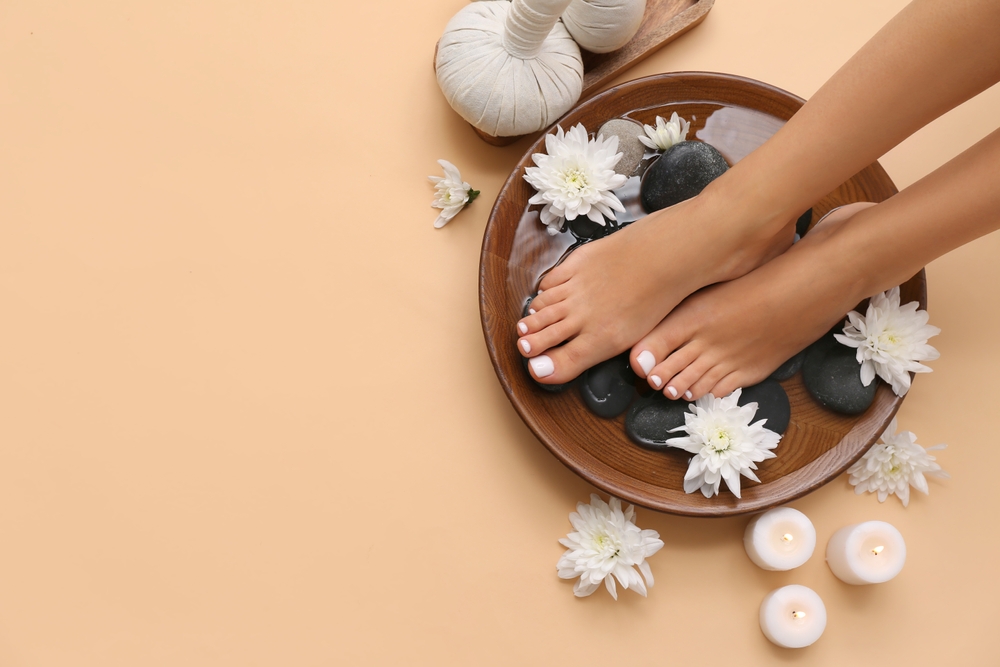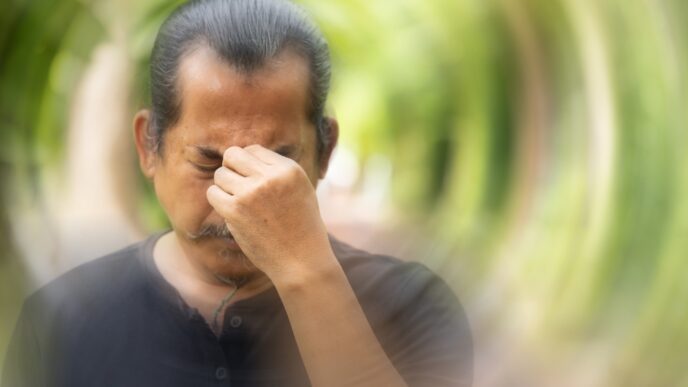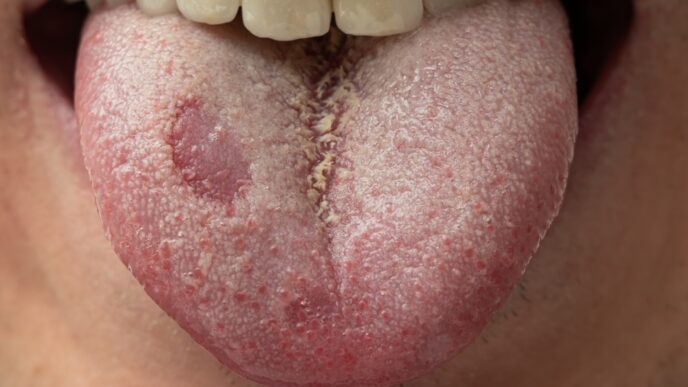A warm foot soak may sound like bliss after a long day, but for people with diabetes, it could lead to unexpected trouble. Dr Radhamani Rajakumar, consultant endocrinologist, explains why this common treat might not be the best idea for diabetic feet.
WORDS LIM TECK CHOON
 FEATURED EXPERT FEATURED EXPERTDR RADHAMANI RAJAKUMAR Consultant Internal Medicine Physician & Endocrinologist Columbia Asia Hospital – Bukit Rimau |
| In this article, we’ll define a foot soak as submerging of the feet in warm or hot water, often with the addition of Epsom salts, essential oils, herbal infusions, antiseptics, bath salts, and more. |
We’ve all seen them: those soothing spa ads promising to “detoxify, relax, and rejuvenate” with a simple herbal foot soak.
Even our own local traditions, like pre-urut rituals, swear by a good soak in warm water infused with herbs and oils.
However, you’re living with type 2 diabetes, that innocent-looking basin of water could be a hidden hazard.
WHY FOOT SOAKS CAN BE RISKY
“Foot soaks aren’t generally safe for people with diabetes,” Dr Radhamani explains. “They can actually lead to serious complications rather than providing relief.”
The problem lies in the way diabetes affects the feet.
Type 2 Diabetes Can Cause Nerve Damage
- Over time, especially if blood sugar isn’t well controlled, diabetes can damage the nerves in your legs and feet.
- This condition is called diabetic neuropathy.
- It reduces your ability to feel pain, heat, or injuries. As an example, Dr Radhamani explains that you could scald your feet in too-hot water and not even realize it.
It Also Affects Blood Vessels and Sweat Glands
- High blood sugar can damage blood vessels, causing them to become narrower.
- This results in poor circulation in the legs and feet.
- “Poor circulation makes it difficult for wounds or infections to heal,” says Dr Radhamani.
- Also, diabetes can cause decreased sweating, which leads to dry, cracked skin. Cracked skin increases the risk of infections.
THEREFORE, A FOOT SOAK CAN MAKE THINGS WORSE
- For people with diabetes that have reduced sensation in their feet, they may not be able to sense that the water used is too hot. This puts them at risk of burns and scalding.
- People with diabetes often have naturally dry skin. Soaking the feet for too long can make their skin even drier, increasing the risk of skin cracks and fissures.
- If water gets trapped between your toes or you don’t dry your feet properly, bacteria and fungus can grow and flourish in the warm, moist environment of those areas.
“In some cases, what starts as a small infection can escalate,” warns Dr Radhamani.
“If left untreated, especially with poor circulation, it can lead to serious complications like gangrene, bone infection (osteomyelitis), or even amputation,” she adds.
SAFE FOOT CARE TIPS FOR PEOPLE WITH DIABETES
If you have diabetes, therefore, what can you do to pamper your feet safely?
Dr Radhamani offers these simple, foot-friendly habits:
Daily Check
- Inspect your feet daily for any cuts, blisters, redness, or swelling.
Clean and Pamper Feet Safely
- Wash feet gently with lukewarm water and mild soap — skip the soak. Dry thoroughly, especially between the toes.
- Moisturize the feet daily to prevent dryness and cracking but avoid applying lotion between your toes.
Trim Toenails Correctly
- Trim toenails straight across to avoid ingrown nails.
Choose the Right Footwear
- Wear well-fitting, cushioned shoes and soft socks.
- Avoid tight footwear. Shoes that are too tight can create pressure points on the feet and lead to additional problems.
- Never go barefoot, even at home, to avoid accidental injuries.
See the Right Healthcare Professional
- See a podiatrist for callus removal or other foot issues.
- Most importantly, if you notice a wound that won’t heal, or signs of infection like redness, swelling, or discharge, get it checked immediately.
“Prompt attention can prevent serious complications,” stresses Dr Radhamani.
PAMPER YOUR FEET, BUT DO IT SAFELY
A foot soak might seem like harmless self-care, but for people with diabetes, it’s best to give it a miss. The risks outweigh the relaxation.
As Dr Radhamani puts it, “It’s better to care for your feet gently and consistently than to risk serious problems over something that seems soothing in the short term.”
So go ahead, pamper those feet. Just do it the safe, dry, and diabetes-friendly way.
This article is part of our series on how to keep your feet healthy and in tip-top condition.
|














